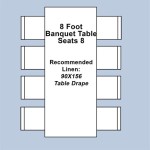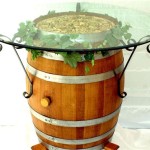DIY Farmhouse Table Bench Plans: A Comprehensive Guide
The farmhouse aesthetic, with its emphasis on rustic charm and handcrafted appeal, continues to be a popular choice in home decor. A crucial element of this style is the farmhouse table, often accompanied by a matching bench. Constructing a farmhouse table bench is a manageable DIY project that can enhance dining space while adding a personalized touch. This article details various farmhouse table bench plans, covering material selection, construction techniques, and customization options.
Before embarking on any DIY project, careful planning is essential. This includes assessing skill level, budget constraints, and space limitations. Farmhouse benches are typically simple in design, making them suitable for beginners with basic woodworking skills. However, more complex designs incorporating intricate details may require intermediate or advanced skills. Budget considerations involve the cost of lumber, hardware, and finishing products. Space limitations will dictate the dimensions of the bench and influence the choice of design.
Material Selection for Farmhouse Benches
The selection of materials directly impacts the durability, aesthetics, and overall cost of the farmhouse bench. Common wood choices include pine, fir, oak, and maple. Pine and fir are relatively inexpensive and readily available, making them suitable for budget-conscious projects. Oak and maple are hardwoods that offer greater strength and durability, but they come at a higher cost. Reclaimed wood is another popular option, providing a unique rustic look and promoting sustainable practices. When selecting reclaimed wood, inspect it carefully for signs of rot, insect damage, or excessive warping.
Beyond the primary wood material, various hardware and finishing products are required. Screws are typically used for assembling the bench components, with different sizes and types suitable for various joints. Wood glue adds additional strength and stability to the connections. Sandpaper is essential for smoothing the wood surfaces and preparing them for finishing. Finishing products include stains, paints, sealers, and varnishes. The choice of finish depends on the desired aesthetic and the level of protection required. For example, a clear varnish will protect the wood while allowing its natural grain to show through, whereas a stain can alter the color of the wood to achieve a specific look.
The dimensions of the lumber will depend on the chosen bench design. Typical farmhouse benches are 12-18 inches wide and 16-18 inches high. The length of the bench should be approximately 1-2 feet shorter than the length of the corresponding table to allow for comfortable seating and maneuverability. Common lumber dimensions include 2x4s for the bench legs and supports, and 1x6s or 1x8s for the bench seat. These dimensions can be adjusted to suit specific design preferences and material availability.
Construction Techniques for Building a Farmhouse Bench
The construction process typically involves several stages, including cutting the lumber, assembling the frame, attaching the seat, and finishing the surfaces. Accurate cutting is crucial for ensuring that the components fit together properly. A circular saw or miter saw is recommended for making straight cuts, while a jigsaw can be used for cutting curves or intricate shapes. Before assembling the frame, pre-drilling pilot holes is essential to prevent the wood from splitting when screws are driven in.
The frame provides structural support for the bench. It typically consists of four legs connected by horizontal supports. The legs can be attached to the supports using screws and wood glue, creating a strong and stable frame. For added stability, corner braces can be installed at the joints between the legs and supports. The design of the legs can vary depending on the desired aesthetic. Simple straight legs are the easiest to construct, while turned or tapered legs can add a more refined look.
Attaching the seat to the frame is the next step in the construction process. The seat is typically made from several boards arranged side-by-side. The boards can be attached to the frame using screws and wood glue. Spacing the boards slightly apart can create a rustic look, while butting them together tightly can provide a smoother surface. The edges of the seat can be rounded over using a router or sandpaper to improve comfort and prevent splintering.
Once the bench is assembled, the surfaces need to be sanded smooth and prepared for finishing. Sandpaper with progressively finer grits is used to remove any imperfections and create a smooth surface. After sanding, the bench should be wiped clean to remove any dust or debris. The finish can then be applied according to the manufacturer's instructions. Multiple coats of finish may be required to achieve the desired level of protection and appearance. Allow each coat of finish to dry completely before applying the next coat.
Customization Options for Farmhouse Benches
One of the benefits of DIY projects is the ability to customize the design to suit specific preferences. Farmhouse benches can be customized in various ways, including altering the dimensions, adding decorative details, and choosing unique finishes. Altering the dimensions can make the bench more suitable for a particular space or accommodate specific seating requirements. For example, a longer bench can seat more people, while a narrower bench can fit into a smaller space.
Decorative details can add visual interest and personalize the bench. These details can include carved designs, painted patterns, or decorative hardware. Carved designs can be created using chisels or a rotary tool. Painted patterns can be applied using stencils or freehand techniques. Decorative hardware, such as antique-style knobs or hinges, can add a vintage touch. The choice of decorative details should complement the overall aesthetic of the farmhouse style.
The finish is another area where customization is possible. Staining the wood can enhance its natural grain or create a different color. Painting the wood can provide a solid color and protect it from the elements. Distressing the finish can create a rustic, weathered look. This can be achieved by sanding the finish in certain areas or using specialized distressing techniques. Different types of finishes, such as oil-based, water-based, or polyurethane, can be used to achieve different levels of protection and sheen. The choice of finish should be based on the desired appearance and the intended use of the bench.
Adding an upholstered seat is another customization option that can enhance comfort and add visual appeal. The seat can be upholstered with fabric or leather, and the choice of material and color can be tailored to match the overall decor. Upholstering a bench seat involves attaching a layer of padding and fabric to the seat using staples or tacks. The process requires some basic upholstery skills, but it can be a relatively simple DIY project.
Another customization option involves incorporating storage into the bench design. This can be achieved by adding a hinged lid to the seat, creating a storage compartment underneath. Alternatively, drawers or shelves can be added to the bench frame, providing additional storage space. Incorporating storage into a farmhouse bench can be a practical way to maximize space and organize belongings.
Safety is paramount when undertaking any woodworking project. Always wear appropriate safety gear, including safety glasses, hearing protection, and a dust mask. Use sharp tools and follow the manufacturer's instructions carefully. Work in a well-ventilated area to avoid inhaling dust or fumes. If unsure about any aspect of the construction process, seek guidance from experienced woodworkers or consult online resources.
By carefully selecting materials, utilizing appropriate construction techniques, and exploring customization options, a DIY farmhouse table bench can be a rewarding and personalized addition to any home. The information provided in this article serves as a comprehensive guide to help individuals successfully complete this project.

Diy Farmhouse Bench Love Grows Wild

Diy Farmhouse Table And Bench Honeybear Lane

Diy Farmhouse Table And Bench Using Free Plans From Ana White

Beginner Farm Table Benches 2 Tools 20 In Lumber Ana White

Diy Farmhouse Bench Free Plans Rogue Engineer

Diy Farmhouse Bench Love Grows Wild

Step By Diy Dining Bench Plans Wannabe Clutter Free Farmhouse Table

Diy Farmhouse Benches

How To Build A Farmhouse Bench For Under 20 In Supplies The Creative Mom

Diy Farmhouse Bench Love Grows Wild








